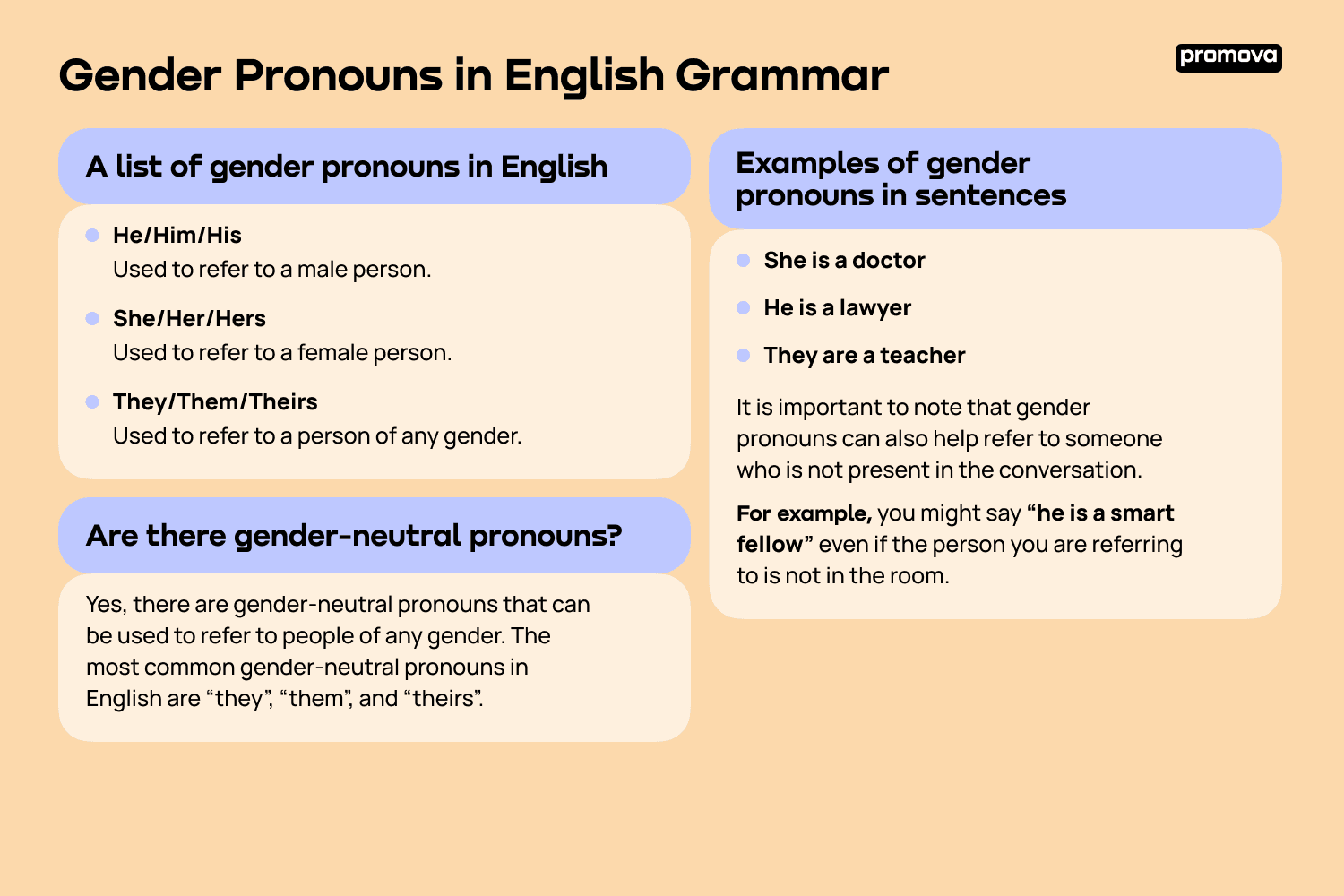Gender Pronouns in English Grammar
Contents
In English grammar, gender pronouns are used to indicate a person’s gender in a sentence. Understanding how to use gender pronouns correctly is essential for effective communication and making sure you create correct sentences.
What are gender pronouns?
Gender pronouns are a set of words that are used to refer to people based on their gender identity. In English, they are often used to indicate a person’s gender in a sentence. For example, someone might use the pronoun “she” when referring to a female person or the pronoun “he” when referring to a male person.
In addition to the traditional pronouns “he” and “she”, there are also gender-neutral pronouns that can be used to refer to people of any gender. These pronouns are becoming increasingly more common in English grammar, as they can help to make conversations more inclusive.
Typically, we use “they” to refer to people in a gender-neutral manner.
Gender pronoun grammar
In grammar, gender pronouns can be used to refer to a person in either the singular or plural form. For example, when referring to one person, you might say “she is going to the store”. When referring to multiple people, you might say “they are going to the store.”
In sentences, gender pronouns simply play the role of nouns, adjectives, or possessive determiners. For example, you can use them in place of a person’s name. So, if you’re talking about someone and don’t know their name, you can use a gender pronoun to refer to them. Like we did just now!
A list of gender pronouns in English
Below is a list of gender pronouns in English:
- He/Him/His – Used to refer to a male person.
- She/Her/Hers – Used to refer to a female person.
- They/Them/Theirs – Used to refer to a person of any gender.
Note that not all gender pronouns are listed here. Many other gender pronouns are used by different communities, and it is important to be aware of and respectful towards them. This reference article focuses on standard English grammar, so we are only providing the pronouns applicable in most situations and sentences.
2
Are there gender-neutral pronouns?
Yes, there are gender-neutral pronouns that can be used to refer to people of any gender. The most common gender-neutral pronouns in English are “they”, “them”, and “theirs”.
Using gender-neutral pronouns can help make conversations inclusive and respectful. They can help to ensure that everyone is referred to in the way that they prefer.
Examples of gender pronouns in sentences
Here are some examples of gender pronouns being used in sentences:
- She is a doctor.
- He is a lawyer.
- They are a teacher.
It is important to note that gender pronouns can also help refer to someone who is not present in the conversation. For example, you might say “he is a smart fellow” even if the person you are referring to is not in the room.

Summary
Gender pronouns help us refer to people in sentences. We use he/him/his for male persons, she/her/hers for female persons, and they/them/theirs for gender-neutral expression. In grammar, gender pronouns simply play the role of nouns, adjectives, and possessive determiners.


Comments